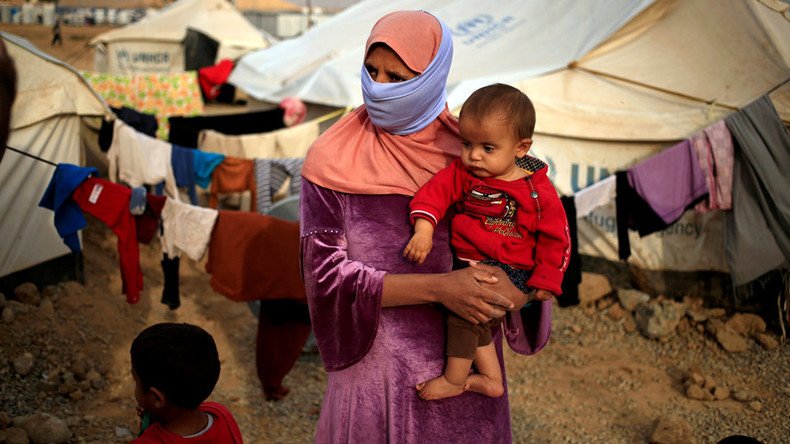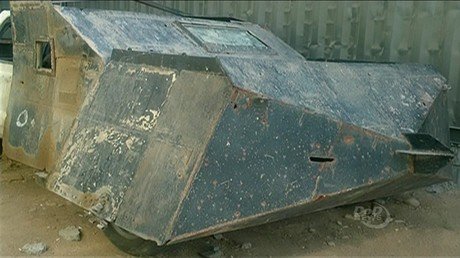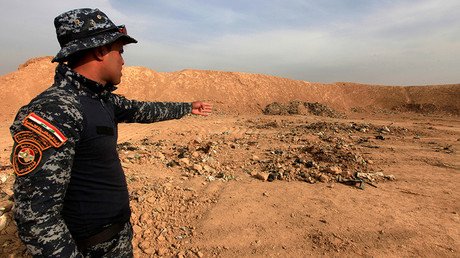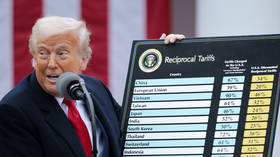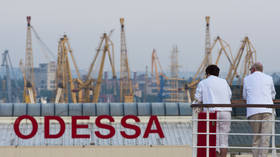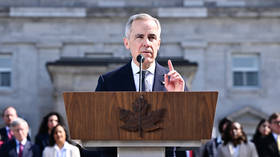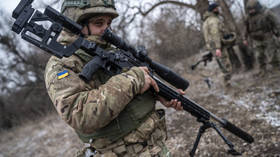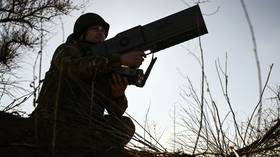Month of Mosul siege: No deadline for victory, civilians trapped between rock & hard place
After a month of offensive against terrorist-held Mosul no breakthrough is in sight. The civilian population of the Iraqi city is forced to either be caught in crossfire or try to flee the besieged town.
The operation to retake Mosul, the Iraqi stronghold of the terrorist group Islamic State (IS, formerly ISIS/ISIL), was launched on October 17. The offensive force is a 100,000-strong alliance of Iraqi Army troops, Kurdish Peshmerga militias, Iraq-backed Shiite militias, Turkish expeditionary forces and Western special operations troops providing targeting for US-led coalition airstrikes and advice to the local forces. The operation is the largest since the US invaded Iraq in 2003.
The strength of IS forces occupying Mosul is estimated at 4,000 to 9,000 fighters, including 1,000 foreign militants. Their underwhelming numbers are compensated by two years of preparation, guerrilla tactics involving hit-and-run attacks on communications, use of devastating armored car bombs driven by suicide drivers, and a civilian population of Iraq’s second-largest city that may be as high as 1.5 million, who serve as human shields for the militants.
After the month-long assault, Mosul’s liberation is nowhere to be seen, coalition members acknowledge while maintaining confidence that the day will come.
“The threat that IS poses is still far from being eradicated and our mission is by no means accomplished,” the German Foreign Ministry said in a statement after a meeting of the coalition’s Small Group in Berlin.
“It is still impossible to predict how long it will take to liberate the cities of Mosul and Raqqa from IS. However, it is clear that it is extremely urgent to plan for the time ahead, to stabilize the territories that will one day be liberated and to offer the people in the region prospects for the future.”
What the offensive managed to accomplish is to send over 56,000 civilians fleeing for their lives since the operation started, according to International Organization for Migration (IOM).
“Since military operations to retake Mosul from [IS] began last month, IOM Iraq tracking shows population movement away from the combat zone has more than doubled in the past 10 days, from 22,224 on 4 November to 56,412 last night,” the organization said on Tuesday.
“Some 48,750 men, women and children have now been displaced from Mosul district alone. Another almost 5,000 have been displaced from Al-Hamdaniya district, with smaller numbers of people displaced from Telefar, Makhmour and Tilkhaif.”
Earlier a number of aid organizations said that in worst-case scenario would see over a million of people fleeing Mosul amid the hostilities.
In the contested neighborhoods east of Mosul residents get killed by both sides and are often not sure which to fear more. IS does not hesitate to use indiscriminate attacks in residential areas and prevents people trying to run, a 60-year-old man who identified himself as Abu Arkan, told International Business Time.
“If they see people fleeing they will kill them,” he said.
However, others see attacks by coalition warplanes and Iraqi Army artillery as more dangerous.
“The main threat to us was air strikes and shelling,” said a man who gave his name as Abu Zain.
Counting civilian casualties in Mosul is difficult, yet along telling those killed by the terrorists from those killed by the attackers. The UK-based organization Airwars says up to 127 civilians were killed by coalition airstrikes over the month-long offensive.
Inside the city, the terrorist group is reportedly rounding up and executing in dozens suspected informants of the Iraqi army – which, according to Iraqi authorities, do exists in the city. Just having a mobile phone may be enough to get executed, according to Reuters. The agency said IS this week distributed a list of 21 people, who were executed as spies over the weekend.
On the other side of the frontline civilians face other perils. Last week Amnesty International accused Iraqi forces of killing and torturing civilians suspected of sympathizing IS. Baghdad blamed local residents for the crimes, saying its regular troops had nothing to do with it.
This week Human Rights Watch reported that Iraqi troops and its allies executed an IS fighter, who surrendered to them after an attack on Qayyara neighborhood. The group said footage it obtained also showed bodies of at least five IS fighters mutilated by the Baghdad-allied militia fighters.
Mosul residents “were caught between the hammer of the coalition bombings and the hard place of the IS violence,” Russian Foreign Ministry spokesperson Maria Zakharova said on Thursday. She added that Western mainstream media is trying to “lacquer up the reality” of the operation.
